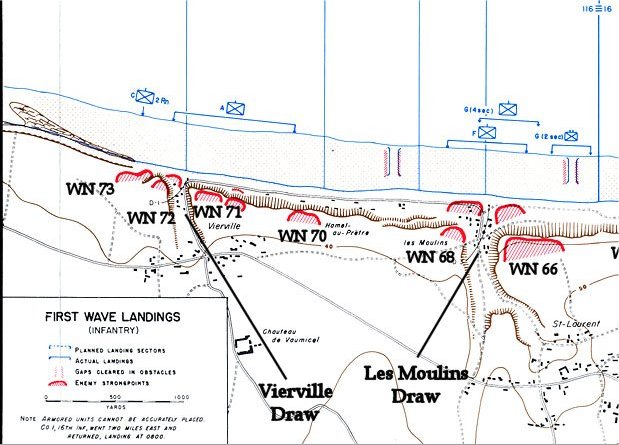

 |
This is the view from a post-war pier off of Vierville Draw. High tide is shown here, which is not hisorical. The date and time of the invasion was set for the lowest possible tide, so that German beach obstacle would all be above water and of little threat to the landing craft. At the time of the initial landings, about 6:30am, the waterline was approximately 300 to 400 yards out. The invasion plan was for Company C of the 2nd Rangers to land to the right of the draw in two LCAs. Company A of the 116th would land from six LCAs with three boats on either side of the draw. To the left of Co A, it was intended that Companies G, F, and E of the 116th would simulataneously land on the next mile of beach and advance inland along with Co A and the 743rd Tank Bn. In reality, poor visibility from brush fires (caused by the bombardment) along with strong currents took Companies G, F, and E far off course. Co E was a full mile off course and fought with the 1st Division. Companies F and G landed near Les Moulins Draw, the next beach exit. This left Co A, 116th and Co. C, 2nd Rangers to attack Vierville Draw alone. Bad luck continued as one of the six boats transporting Co A sprung a leak and sank, resulting in one man drowning and the rest of the men struggling to stay afloat before being rescued. The remaing five boats continued on and beached. |
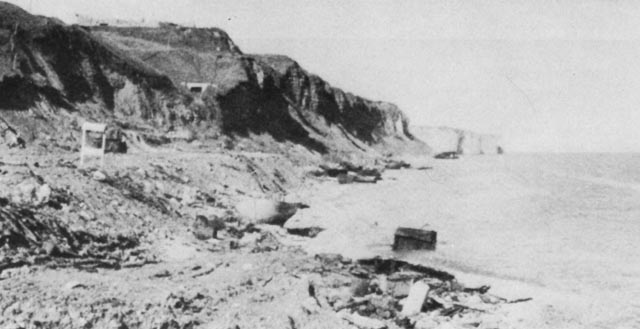 |
Wartime view down the beach toward where Goranson's men went ashore and climbed the cliffs. The pillbox enfilading the beach, still extant, is prominent. |
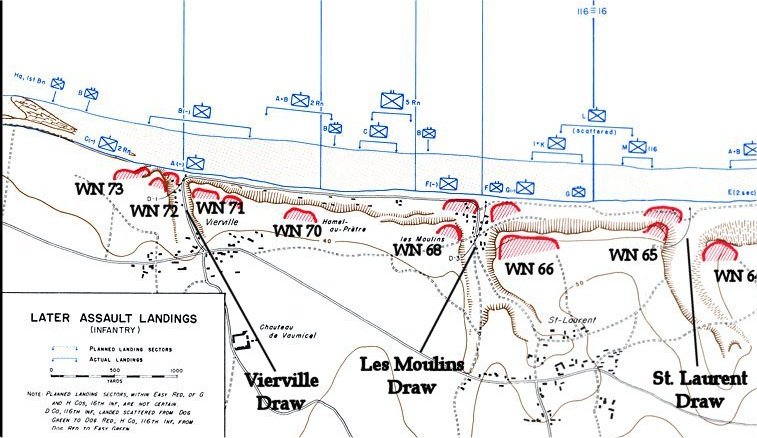 |
At around 7:15, the second wave began to approach the
beach - Companies B and D in twelve LCAs and 1st Bn HQ and medics in
three LCAs. By the time they saw that the first wave was
shattered, it was too late to divert to another beach. In the
boat carrying Cpt. Zappacosta of Co. B, only one man survived the
landing. In another boat, an 88mm round came through, destroying
the ramp, destroying the doors while killing Cpt Schilling, the CO of
Company D and
blinding the platoon sergeant. Like the first wave, the second
wave took heavy casualties and were pinned down. Company D, 116th
had 5 of its 9 officers killed and 10 sergeants killed. One of
the survivoring sergeants of Co. D, Robert Slaughter of Bedford,
Virginia many decades later
would spearhead efforts to get the National D-Day Memorial built in
Bedford. He later write a book about his wartime experiences.
(Co. D is not shown on the map for some reason.) Three
LCAs with Co. B men successfully diverted 1,000 yards further
east. |

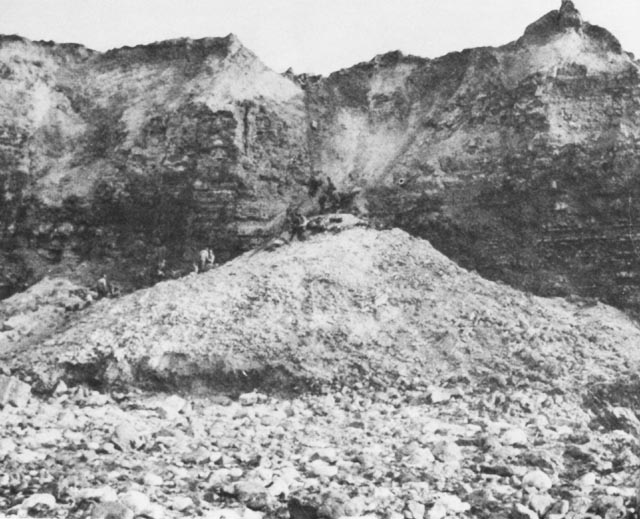 |
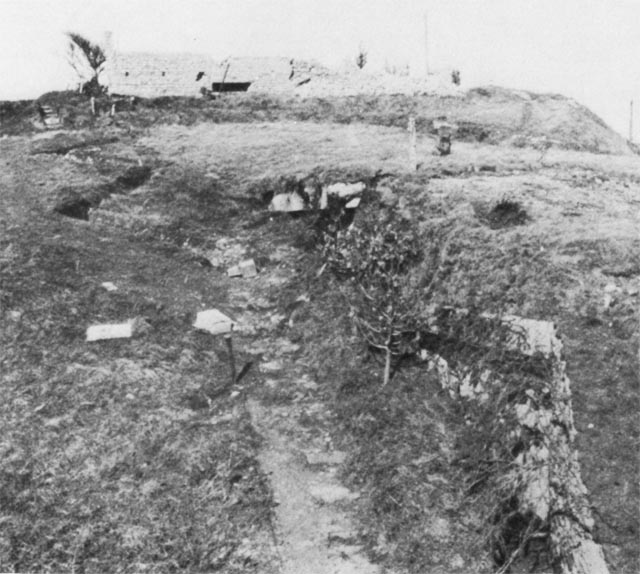 |
| Where Goranson's Company Scaled the cliff | Fortified House |


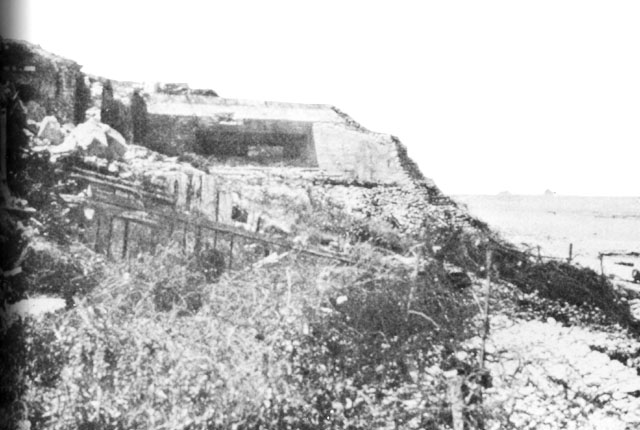 |
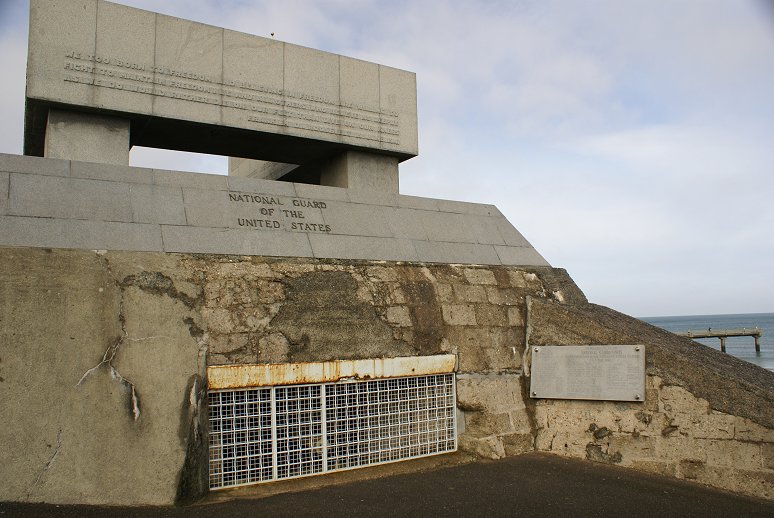 |
| The pillbox was camoflauged to look like beach house from the front. Note all the wire in front of it. | The pillbox is now a monument to the National Guard. |


